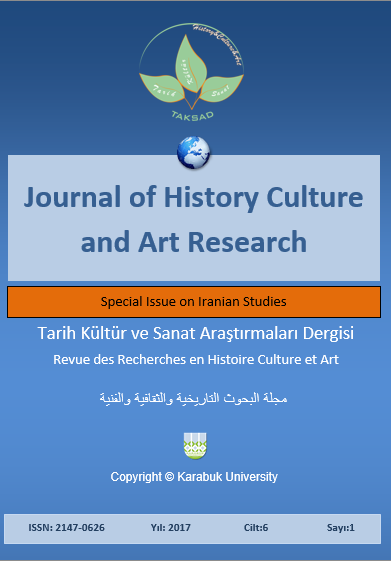The Role of Language in Processing Various Characters in Bahram Beyzai’s Play: One Thousand and First Night
DOI:
https://doi.org/10.7596/taksad.v6i1.698Keywords:
Play, Playwrights of Iran, Beyzai, Role of language, Drama, Characterization.Abstract
Language is one of the main components of narrative (both short story and play), the significance of which is irrefutable in narrative literature. Since most events occur within and through language in drama, studying elements of language is quite effective in the analysis of the discourse of characters. Characters communicate and bond with each other through language in a play; thus; the present study aims at the analysis and critical reading of Bahram Beyzai’s One Thousand and First Night, as one of the leading playwrights of Iran, in following realms: discourse system and structure of the play, it’s variety and tasks, features and functions, and characterization techniques which are realized through language. To do so, the present study scrutinizes the characters of the play in terms of speech and language usage and the effect of language on characterization and the flourishment of personae. Manfred Pfister’s Theory and Analysis of Drama has been applied as the main theoretical tools for studying various functions of language, such as referential function, expressive, rhetorical, speech-maker, meta-linguistic, and poetic.
References
Ahmadzade, Ali Reza (2012). Dictionary of Theatrical Terms. Tehran: Faraz Pub.
Bagheri, Elham (2004). The Confrontation of Myth and History in Beyzai’s works. Tehran: The World of Ideas Pub.
Beyzai, Bahram (2006). One Thousand and First Night. Tehran: Publication of Intellectuals and Women's Studies.
Card, Scott (2008). Characterization and Point of View in Story. Translated by Parisa Khosravi.
Dowson, S. (1997). Drama. Translated by Firooze Mohajer. Tehran: Center Publication.
Khanlari, Parviz (2003). The Rhythm of Persian Poetry. Tehran: Iran’s Cultural Foundation Publication.
Mahmudi, Bakhtiari & Behrooz (2009). An Approach to Bahram Beyzai’s Language of Drama. Thesis.
McCarthy, Robert (2010). Story: Structure, s-Style, and Principles of Writing Plays. Translated by Mohammad GozarAbadi. Tehran: Hermes Publications.
Miller, Gerald (1989). Verbal Communication (Rhetoric Analysis). Translated by Ali Zekavati Gharagozloo. Tehran: Soroosh Publications.
Mostofi, Babak (2002). “Myth, Tragedy, and Current story writing: An Interview with Bahram Beyzai on One Thousand and First Night”. New Rose Journal. pp 7-27.
Pfister, Manfred (2008). The Theory and Analysis of Drama. Translated by Mehdi NasrollahZade. Tehran: Logics Publication.
Seeger, Linda (2009). The Creation of Characters: A Guide to the Formation of Characters in Movies, Television Series, Novels, Short Stories. Translated by Masood Madani. Tehran: Rahrovan Pouyesh Publications.
Shahbazi, Kazem & Kian, Afraz, Azam (2008). Iran’s Theatre in the Passage of Time. Tehran: Afraz Publications.
Winy, Michael (1998). Theatre and its Principle Issues. Trans by Soheila Fattah. Tehran: Semat Publications.
Yule, George (2013). Language Pragmatism. Translated by Mohemmad Ammozade and Manoucher Tavangar. Tehran: Semat Publications.
Downloads
Published
How to Cite
Issue
Section
License
All papers licensed under Creative Commons 4.0 CC-BY.- Share — copy and redistribute the material in any medium or format
- Adapt — remix, transform, and build upon the material for any purpose, even commercially.
Under the following terms:
Attribution — You must give appropriate credit, provide a link to the license, and indicate if changes were made. You may do so in any reasonable manner, but not in any way that suggests the licensor endorses you or your use.
- No additional restrictions — You may not apply legal terms or technological measures that legally restrict others from doing anything the license permits.







